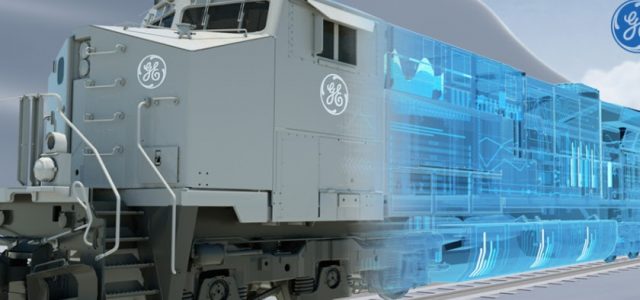If you expected the food and beverage industries to be exempt from digital transformation, you’re in for a surprise. Technology is rapidly changing every industry and the supply chains which support them — and that includes how we purchase and distribute food. This is a look at just a few of the technologies changing this industry forever and for the better.
Amazon, whole foods and ‘Last Mile’ delivery
Every player in every supply chain on earth recognizes the “last mile” of delivery as one of their biggest challenges. Amazon threw the gauntlet when they purchased Whole Foods for $13.7 billion, in more ways than one.
As food companies all over the world look to shorten the distance between manufacturers and consumers, Amazon may well have beaten them to the punch with this acquisition. It means combining Amazon’s accessibility, popularity, and technology with the infrastructure of an already-successful food distribution platform.
What does this platform look like? With this acquisition, Amazon finds itself in the enviable position of owning more than 400 refrigerated warehouses. Each one of these is situated within 10 miles of 80 per cent of the U.S. population. So what’s the implication of this?
Remember that Amazon’s ultimate mission is to use their predictive analytics to anticipate and even ship customer orders before they’re placed. They’ve made an art of distributing inventory strategically among their distribution centres in order to cut shipping times. This is good for third-party companies that sell their wares via Amazon warehouses.
Now, bring the Whole Foods cold storage and distribution model into this and you begin to see the implications for a new kind of B2B and B2C food supply chain. Food manufacturers will be able to leverage Amazon’s newly acquired network of cold storage facilities, and their finely tuned shipping and delivery processes, to sell directly to consumers — albeit after giving a cut to Amazon. What Amazon currently does for third-party sellers of general merchandise, it will soon do for food and beverage companies.
Smarter logistics, redistributors and just-in-time delivery
The modern consumer craves greater variety and snappy convenience. This means the more than 16,500 companies engaged in food distribution will need to pivot to just-in-time delivery models in order to meet these demands.
This is where collaboration via technology comes in handy. Even with Amazon making a move in this industry, we may see a growth in the popularity of tech-savvy redistributors as food companies look for ways to cost-effectively get their products into as many markets as possible. As an example, Dot Foods uses smart route planning and logistics to consolidate food shipments which would otherwise be dispatched as less-than-truckload (LTL) shipments.
The effect of these kinds of partnerships means food companies can operate with much leaner inventory and send out smaller shipments of more niche products as demand dictates, versus sending large shipments of more generalized merchandise, less often, to save on freight costs.
Amazon offers one compelling proposition for food companies — and here is another, although they’re not mutually exclusive. Companies can use Amazon’s warehouses and delivery expertise to bring “niche” food items closer to the consumer, they can use technology-savvy redistribution partners to bring costs down in their existing supply chains or, more likely, both.
Blockchain, sensors, AI and the need for faster recalls
Technology is one of our best allies when it comes to responding to food safety issues and mounting recall efforts in a timely manner.
The recent romaine lettuce E. coli outbreak in the U.S. resulted in five deaths, 197 illnesses and 89 hospitalizations in 35 states. It took months to track down the origin of the outbreak to an Arizona facility, and all the while sales of romaine lettuce plummeted by an estimated 45 per cent. So what could technology have helped us do differently in this case?
IBM presents one solution focused on preventing foodborne pathogens from entering the supply chain in the first place. With current methods, it can take days to test food products for the presence of dangerous bacteria — but so-called “Crypto Anchor Verifiers” look to cut that timeline down to just seconds.
IBM proposes that food companies deploy these mobile sensors to test food products and record the results on the blockchain. This provides, simultaneously, a benchmark (in the form of a microscopic “profile”) for identical products on the market, as well as the means to trace each item back to its origin.
Machine learning, drones and improved crop yield
Each of these trends means it’s easier than ever for restaurants, retailers and individual consumers to get their hands on a greater variety of foods, faster than ever. It also means e-commerce has emerged as a means to distribute fresh and perishable goods — including produce.
Agriculture represents a $330 billion slice of the American economy. This industry is the first step in many of our food supply chains, so it makes sense to lean on technology to make it as efficient, eco-conscious and responsive to customer needs as possible:
- Agricultural robots can harvest produce and perform other tasks faster than human workers and help cut down on millions of dollars in spoilage annually.
- Footage captured by drones, and processed by machine learning algorithms, can help farmers come to timelier conclusions about soil health, crop rotation and the ideal time to harvest.
- Predictive analytics can help predict crop yield and plan agricultural activities with greater accuracy based on many variables, including changing weather and climate patterns and customer demand.
Whether on the farm — and very close to the source of our food — or in the last mile of delivery to restaurants, retailers and customers’ doorsteps, technology is here to change our food supply chains forever.
Amazon casts a long shadow in this industry now, but the technologies the retail giant uses to its advantage are increasingly accessible. Time will tell, but the food and beverage industry stands a good chance of becoming more, not less, competitive.
Article by channel:
Everything you need to know about Digital Transformation
The best articles, news and events direct to your inbox
Read more articles tagged: AI, Blockchain, Featured, Machine Learning







